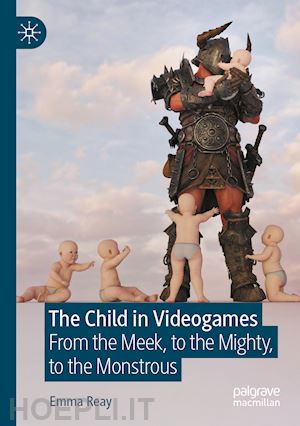
Questo prodotto usufruisce delle SPEDIZIONI GRATIS
selezionando l'opzione Corriere Veloce in fase di ordine.
Pagabile anche con Carta della cultura giovani e del merito, 18App Bonus Cultura e Carta del Docente
Drawing across Games Studies, Childhood Studies, and Children’s Literature Studies, this book redirects critical conversations away from questions of whether videogames are ‘good’ or ‘bad’ for child-players and towards questions of how videogames produce childhood as a set of social roles and rules in contemporary Western contexts. It does so by cataloguing and critiquing representations of childhood across a corpus of over 500 contemporary videogames. While child-players are frequently the topic of academic debate – particularly within the fields of psychology, behavioural science, and education research - child-characters in videogames are all but invisible. This book's aim is to make these child-characters not only visible, but legible, and to demonstrate that coded kids in virtual worlds can shed light on how and why the boundaries between adults and children are shifting.
Chapter 1: Dreaming the Myth Onwards.- Chapter 2: A Survey of Child-Characters in Contemporary Videogames.- Chapter 3: The Child as a Social Construct.- Chapter 4: Child Killers and Killer Children.- Chapter 5: Child Heroes.- Chapter 6: Plushies, Dollies, and Action Figurines.- Chapter 7: The Kid in the Fridge.
Dr. Emma Reay is a Senior Lecturer in Emerging Media at the University of Southampton.











Il sito utilizza cookie ed altri strumenti di tracciamento che raccolgono informazioni dal dispositivo dell’utente. Oltre ai cookie tecnici ed analitici aggregati, strettamente necessari per il funzionamento di questo sito web, previo consenso dell’utente possono essere installati cookie di profilazione e marketing e cookie dei social media. Cliccando su “Accetto tutti i cookie” saranno attivate tutte le categorie di cookie. Per accettare solo deterninate categorie di cookie, cliccare invece su “Impostazioni cookie”. Chiudendo il banner o continuando a navigare saranno installati solo cookie tecnici. Per maggiori dettagli, consultare la Cookie Policy.